Top 7 tips for an unforgettable weekend in Nantes
I recently visited my friend Marie, who lives in Nantes, a vibrant city in west France (not exactly on the coast, but not too far either). Although Marie has been living there for over ten years now, this was my first ever time in Nantes. It definitely won’t be the last though. I flew there from London on a Friday evening, and came back exactly 48 hours later, on Sunday evening. Based on this brief trip, I’m now sharing my top 7 tips for an unforgettable weekend in Nantes, the 6th most populous city in France (in case you’re wondering the largest one is Paris, followed by Marseille, Lyon, Toulouse, Nice and Nantes).
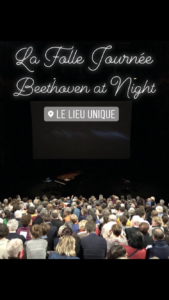
Tip 1: La Folle Journée
The highlight of my weekend in Nantes was a classical music festival, known as La Folle Journée. It is held annually since 1995 and this year it was dedicated to Beethoven celebrating the 250th anniversary of his birth. It took place at the art center Le Lieu Unique (housed in the old LU biscuit factory), over five days between the 29th of January and the 2nd of February 2020. The program featured around 250 classical music concerts, and I was lucky enough to attend two of these events.
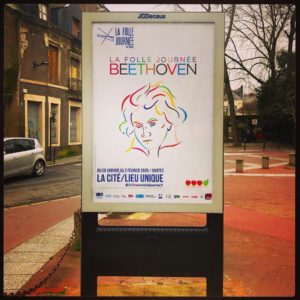
Tip 2: Le Voyage à Nantes
Le Voyage à Nantes is a trail of art installations and exhibitions around the city. It was established in 2011 to promote Nantes as a tourism and culture destination, and takes place every year throughout the summer. A green line allows the visitors to follow the trail and explore the various art creations scattered around Nantes.
Tip 3: Les Rendez-vous de l’Erdre
Les Rendez-vous de l’Erdre is a jazz festival taking place at the end of the summer. This year, it is due from the 24th to the 30th of August. It takes place in Nantes and other nearby towns (Nort-sur-Erdre, Petit Mars, Sucé-sur-Erdre, La Chapelle-sur-Erdre, Carquefou, Blain, Guenrouët, Saffré, Le Gâvre, Les Touches et Saint-Mars-du-Désert) where the River Erdre flows through. All the concerts are free to attend.
Tip 4: Scopitone Festival
Scopitone is an annually held festival that takes place in September. It features exhibitions, workshops and electronic music gigs (live performances and DJ sets). The line-up and the exact dates for 2020 are yet to be announced.
Tip 5: Explore Nantes on foot
Of course, there is much more to Nantes than music festivals and concerts. Weather permitting, the best way to explore the city is on foot. If you only have a weekend in Nantes, start your walk from the city’s cathedral (Cathédrale Saint-Pierre-et-Saint-Paul), then walk to the castle (Château des Ducs de Bretagne), dating back to the 13th century. Make sure you take a view of the Miroir d’Eau, a beautiful reflection of the castle.
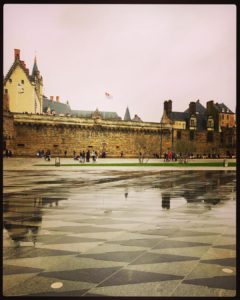
From there, continue towards the Saint Nicolas Basilica of Nantes (Basilique Saint-Nicolas de Nantes), standing tall since the 19th century. Have a coffee at the Café du passage, directly opposite the neo-gothic church. Afterwards, walk past the Place Royale, and make your way to the Passage Pommeraye, a beautiful shopping mall also dating back to the 19th century. Then, walk through Cours Cambronne all the way to the bank of the Loire River and to the Memorial to the Abolition of Slavery (Mémorial de l’Abolition de l’Esclavage), which reminds us of the city’s dark history.
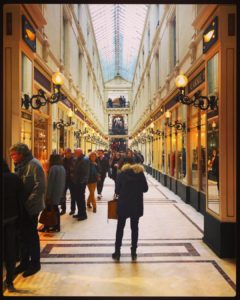
Cross the river to the Île de Nantes, home to the Machines de l’Île: a giant elephant (Le Grand Éléphant) and a heron. Have a coffee at the LevЯette Café overlooking the river, before crossing back to the mainland. From there, you can take the Navibus, a short ferry journey to the historic fishing village of Trentemoult the south bank of the river. Here, colorful houses may remind you of Scandinavian harbors.
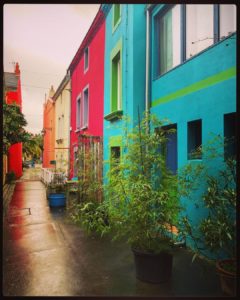
Tip 6: Musée d’arts de Nantes
Nantes is also home to dozens of museums. As an art lover, I visited the Arts Museum of Nantes (Musée d’arts de Nantes). The museum’s collection features paintings and sculptures from the 13th to the 21st century. Highlights include works by Claude Monet, Wassily Kandinsky and Auguste Rodin. The museum is free to attend on the first Sunday of the month (except for July and August); entry otherwise costs 8 euros. It is closed on Tuesdays, whereas it is open until late (9 pm) on Thursdays. At the weekend, the museum cafe offers an excellent brunch.
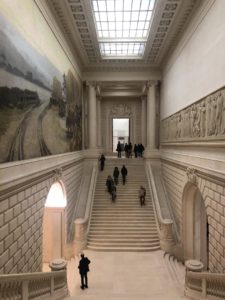
Tip 7: Food and drinks
France is renowned for its cuisine and wine, and many cities and regions are popular foodie destinations. Nantes is not an exception. In fact, it is the birthplace of the delicious gâteau nantais, a light cake made of ground almonds and rum.
One of my favorite gastronomic experiences took place on a Sunday morning when Marie took me to the Marché de Talensac (Talensac Market), the city’s oldest and biggest food market. Here we bought locally produced cheese and fresh oysters. Afterwards, we sat at a cafe opposite the market and had the oysters we’d just bought along with a glass of muscadet wine. This locally produced light-bodied white wine has been described by American wine writer Jon Bonné as the “perfect oyster wine”. It certainly was.
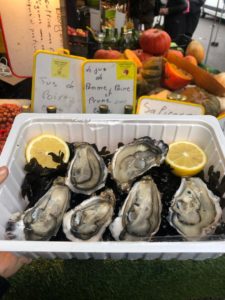
Nantes is also dotted with creperies, but it may be wise to make a reservation beforehand, especially if you’re planning to have a crepe on a Saturday night. There are of course plenty of bistros and restaurants too; Marie and I had lunch at Vacarme.
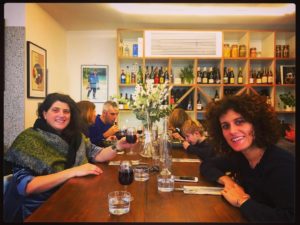
To finish off the day, I have two recommendations: Le Labo is a bar specializing on rum-based cocktails and attracts a rather young crowd, whereas Le Nid, on top of the Tour de Bretagne, the tallest building in the city, offers panoramic views and often has musicians playing live.
Getting to Nantes
It is probably easier and faster to fly to Nantes (rather than take the train from Paris), but be mindful that many routes to and from other European cities operate on a seasonal schedule. The city center is only 20 minutes on the bus from the Nantes Atlantique International Airport (9 euros).
Accommodation
Located in the former Palais de Justice, Radisson Blu Hotel simply stands out. It is within walking distance from both the Château des Ducs de Bretagne and the Machines de l’Île.
When and how long to visit Nantes for
Weather-wise, it is better to visit Nantes from late spring to early autumn (which is when most of the above-mentioned festivals take place), but you may want to visit when in the winter La Folle Journée.
Even if you don’t visit Nantes for a festival, there are plenty of other cultural events to attend. In fact, Nantes attracts many French and international artists throughout the year. For example, Boulevard Des Airs and Tim Dup, two of the artists I mentioned in my recently published post ‘A musical journey to France’, are due to perform in Nantes on the 5th of March and the 3rd of April respectively.
Judging from my personal experience, a weekend is sufficient for the first-time visitor.
If, however, you stay longer, you should visit the Châteaux of the Loire Valley (either as a day trip, or with an overnight stay). There are over 300 castles to choose from; most are located between the cities of Angers and Orleans. The former is about an hour’s drive from Nantes, whereas driving all the way to Orleans can take longer than 3 hours.
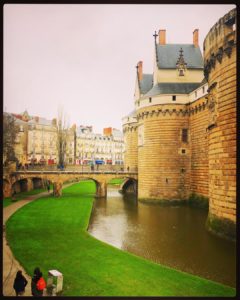
Further reading
If you’re as much Francophile as I am, make sure you read the following posts:
7 reasons to fall in love with Martinique
Bon voyage!
Alex
(the Traveling Psychiatrist)